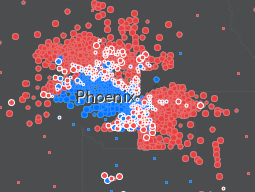Another Atlantic Cities article (see previous post for maps of pop music) covers 2012's Year in Maps. Some of these I've seen and/or blogged about. Here are some good ones that I missed:
The metaphors map:
This map is made by detecting place name metaphors on Twitter such as "Peru is the Indiana of South American countries" or "Ukraine is the Ohio State University of European Countries" - huh?
Church vs Beer - another classic map from Floating Sheep, also based on twitter:
Bomb Sight - locating where each bomb fell in London during the blitz:
There's lots of other good ones, including economic segregation in Houston and other cities, rising sea levels in Boston, gun searches in NYC, a better election map than most I've seen and a map showing the Washington DC Metro's busiest stations. Click here for more.
The metaphors map:
This map is made by detecting place name metaphors on Twitter such as "Peru is the Indiana of South American countries" or "Ukraine is the Ohio State University of European Countries" - huh?
Church vs Beer - another classic map from Floating Sheep, also based on twitter:
Bomb Sight - locating where each bomb fell in London during the blitz:
There's lots of other good ones, including economic segregation in Houston and other cities, rising sea levels in Boston, gun searches in NYC, a better election map than most I've seen and a map showing the Washington DC Metro's busiest stations. Click here for more.


















_map.svg.png)































